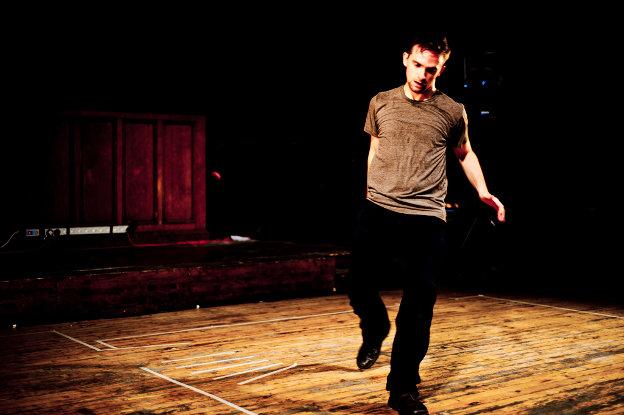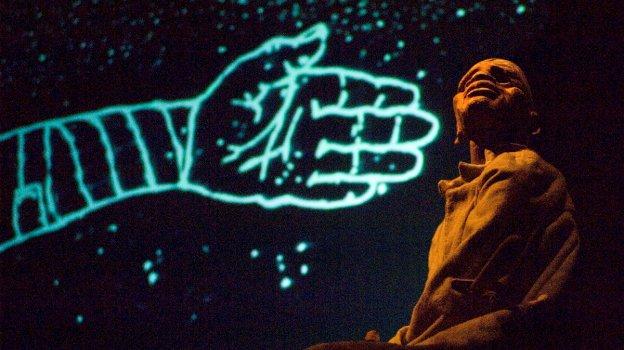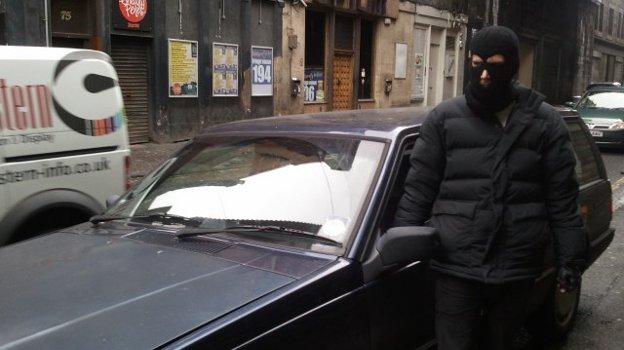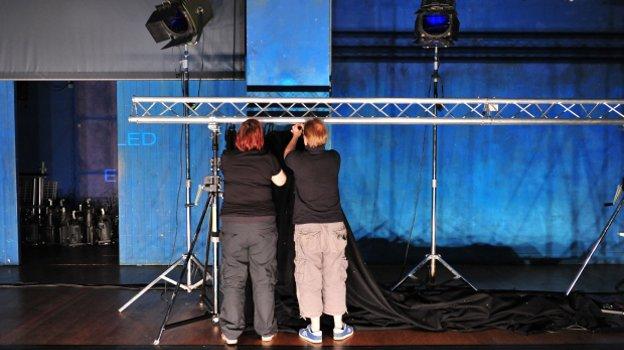
It was a chance remark from a friend that started me thinking. We were discussing the dilemma for contemporary ‘liberal’ parents in choosing whether to send children to private school or to throw them to the sharks of state education in the inner London boroughs, and this somehow moved on to a discussion about the number of people in positions of power in theatre who have been educated in the public school system. (And if there is anyone reading this who lives outside the UK I should explain that ‘public school’ in England refers to a network of respected private schools, as opposed to ‘state schools’ which are for everyone – or everyone else, perhaps, is a better way to put it!)
So is this really the case? That we are ruled by the same elite that make up the majority of politicians, the ‘privately educated’? Even in ‘alternative’ theatre? Apparently so. It was something I hadn’t really thought about previously, but a few minutes of conversation on the subject brings forth the realisation that many of our bastions of non-conformity are run by men (and it is mostly men) of a certain class and education. Perhaps it is something to do with the fact that to be a successful producer, venue director, or booker, it helps to have some sort of financial stability to fall back on, otherwise how on earth could you forge a path in this precarious business?
Of course artists also take enormous financial risks all the time – just look at Edinburgh, awash with theatre-makers who have poured their meagre savings into hiring a venue, then spend all day flyering in the rain to bolster audience numbers – and it could be argued that although it is painful to witness this terrible drain of money, it is still the case that taking a show to Edinburgh as either artist or producer is a privileged option, and perhaps goes some way towards explaining why the Edinburgh-in-August demographic is so resolutely ‘white middle-class’.
What is clear in Edinburgh is that someone other than the artists is making the money. Every single spare room in every single available building – from university lecture halls and student union bars to freemason lodges and community centres – is requisitioned for the month of August, hastily turned into a ‘venue’ and rented out at an exorbitant cost.
Some artists have, in past and recent years, decided to try to do something about this, and to provide an alternative model. Famously, the Aurora Nova festival-within-the festival, set up by performer/director Wolfgang Hoffman with the support of the Brighton-based Komedia Productions, offered Edinburgh something rather different: a venue that provided the opportunity for larger-scale ensemble companies from all over the world (mostly those making physical and visual performance) to bring work to the Fringe. And the collective ethos of the venture meant that everyone was expected to muck in with the cleaning and caring of the space; there were shared meals daily; and all takings from the venue were split between companies, so those doing well at the box office shared their winnings with those doing less well. It all lasted for a good run of around seven years, then was no more.
In more recent years, we’ve seen the arrival of Forest Fringe, which is based at the Forest Café, a year-round community-led space, but which also spills out onto the streets and into other public spaces, offering artists the opportunity to present work for just a day or two, even just a one-off performance, or to ‘scratch’ new work – all very much against the usual Fringe model of the month-long run which you build by constant flyering and desperately courting journalists for high-starred reviews. Forest Fringe took the decision to step outside of the Fringe Society completely, with none of their activities listed in the official brochure (which has become a monstrous telephone directory-sized publication that is too heavy to carry around with you in any case!). Forest Fringe also break the mould by offering many of their events free or on a pay-what-you-want basis.
This year saw the arrival of another new venture – Summerhall – which I’ve mentioned a few times in my Edinburgh blogs: homed in the former veterinary college buildings of the University of Edinburgh; a warren of lecture halls, dissecting rooms, studies, halls, and stairways that have been cleared of their remnants (animal and otherwise) and converted into the temporary home for a group of companies, at the heart of which were Zecora Ura whose all-night adventure Hotel Medea was the most talked-about show of the festival, winning a Herald Angel and being shortlisted for a Total Theatre Award (and I’ll put my cards on the table and say that in my opinion it really should have won a Total Theatre Award!). Summerhall has been a haven for most of the festival, although personally I’ve found that the arrival in the last week of the copious number of events as part of the BAC programme and the numerous short-stay British Council Showcase presentations has changed the vibe considerably at the venue.
Well, I say ‘venue’ but at a discussion held at Summerhall last week, its co-founder/supporter Richard Demarco was insistent that it wasn’t a ‘venue’, it was something far more: intended as a year-round school/laboratory/place of theatrical investigation where ambitions projects such as Hotel Medea, and the 25-strong student ensemble that created Traumatikon, could be hosted, and where artists could be in residence to develop their work. Yes, fair enough… although I would like to point out that as things currently stand, Summerhall is a ‘venue’ for the Fringe, nothing more yet, and although a wonderful initiative, there are other supportive venues offering an interesting range of work, including work from overseas companies, such as Remarkable Arts at St George’s West/ Hill Street, strongly featured on the Total Theatre Awards shortlist with shows such as Audience, Leo, and White Rabbit, Red Rabbit; and Universal Arts at New Town Theatre, who presented Total Theatre Award winning shows Turandot and Sailing On.
The discussion also flagged up the fact that so few Edinburgh artists were involved in the Fringe – but although some good points were made here, I felt a little uncomfortable with the disparaging tone towards Edinburgh’s artistic community, with the implication that there wasn’t really a lot going on year-round. I found myself wondering why none of the renowned ‘beyond August’ Edinburgh-based artists, companies, and festivals were there to defend their territory. Where, for example, were the Manipulate Festival of Visual Theatre (who last winter programmed 1927’s The Animals and Children Took To The Streets, long before it came to the Fringe)? What about Chloë Dear, producer with Iron-Oxide, who works year-round to present Scottish-made circus, physical theatre, and street arts work? Richard Medrington from the acclaimed Puppet State, who also works with the Scottish Storytelling Centre? What about The Arches – Glasgow-based but presenting work in Edinburgh? Or Arches-supported artists Al Seed and the Total Theatre Award winning Adrian Howells, both of whom were presenting work in this Fringe? New Territories, again Glasgow-based but with a knowledge of the Scottish scene? And where were Jon Morgan and the Made in Scotland team? Had any of these people been invited to take part, and if not – why not? It seems extraordinary that none were there, leading me to suspect that they perhaps weren’t invited? I was keen to raise this point at the discussion but sadly the event was so poorly chaired that the only people whose voices we were allowed to hear were the Big Daddies: those older men of a certain class and bearing who were used to dominating discussions. A woman festival producer from Beirut was asked to offer her view of Edinburgh – then was interrupted and patronised when she spoke. It was all too, too awful.
Which brings us back to this dominance in theatre of what someone I know calls ‘The Society of Bald Old Men’. They are everywhere, and their dominance is rarely challenged.
But that is not the whole story…
There are women movers and shakers in contemporary theatre/performance, and they should be heralded. For a start, let’s hear it for producer Jo Crowley who has been taking care of and championing both 1927 and Hotel Medea for all of August, and year-round looks after the likes of Kazuko Hohki and Ridiculusmus! The aforementioned Chloë Dear too; and let’s note that within the street arts and outdoor performance network (which is, in its very nature, a more egalitarian world) there are numerous strong female voices, including Anne Tucker from Manchester International Arts, and Maggie Clarke of X.trax. Back indoors, there are of course such luminaries as Rose Fenton and Lucy Neal, co-founders of the London International Festival of Theatre (LIFT), still going strong after all these years; and Jude Kelly, currently director of the Southbank Centre. In the live art field, there is New Territories director Nikki Milican; Lois Keidan, co-founder/director of the Live Art Development Agency; and the posse of gorgeous women who run Home Live Art. Then, there is the wonderful Helen Lannaghan, co-director (with Joseph Seelig) of the London International Mime Festival, and co-founder, three decades ago, of Total Theatre (or Mime Action Group, as it was called then).
And we really can’t forget Judith Knight – co-founder of Arts Admin, and longterm nurturer of extraordinary artistic talent, with a roster of artists under her wing that includes Curious, Bobby Baker, Geraldine Pilgrim, Lemn Sissay, Ann Bean, Stationhouse Opera, Chris Goode, Rajni Shah, and La Ribot.
It was therefore wonderful that Judith Knight was chosen to receive the Total Theatre Award for a significant contribution to theatre. There have been no female recipients of this Award for many, many years (I can, off the top of my head, only think of Nola Rae and Monica Pagneux as female previous recipients, and they were both a very long time ago), which on one level seems extraordinary, but considering the dominance of those theatre patriarchs, perhaps not so surprising.
So congratulations Judith… good to see Big Daddy wrestled to the ground for a change!










